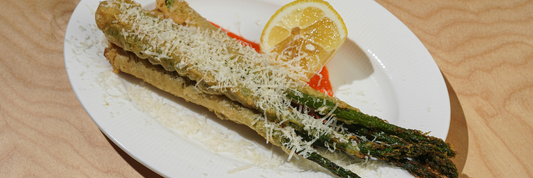Non-profit organizations can feed more people and protect the planet by choosing sustainable packaging. If your mission involves distributing pre-packed meals to communities, switching from plastic to eco-friendly solutions is not only environmentally responsible but also cost-effective in the long run.
In this article, we’ll explore how non-profits can implement eco-packaging, the benefits it offers, and how partners like Kimecopak can help.
-
What Are the Best Sustainable Packaging Options for Food Banks?
-
Food and Packaging Trends: How Can Food Banks Adapt for Greater Impact?
Why Should Non-Profits Use Eco-Friendly Packaging?

Traditional plastic packaging creates serious environmental and financial challenges for food-focused non-profits:
- Environmental pollution: Plastic waste often ends up in oceans and landfills, damaging ecosystems and wildlife.
- Resource depletion: Manufacturing plastic consumes non-renewable fossil fuels.
- Health risks: Some plastics release toxic chemicals into food.
- Waste management strain: Disposing of plastic packaging adds to operational costs and landfill overflow.
By embracing eco-friendly alternatives like compostable containers, recyclable paper boxes, or reusable trays, non-profits can better align with their values while reducing costs and improving operations.
The Key Benefits of Eco-Packaging for Non-Profit Meal Programs

1. Operational Cost Savings
- Lower waste disposal fees: Compostable and reusable options generate less trash.
- Reduced packaging purchases: Reusables can be used again and again.
- Lower transportation costs: Lightweight, minimal designs cut shipping fees.
2. Stronger Brand Image & Donor Appeal
- Showcasing your commitment to sustainability helps attract eco-conscious donors and volunteers.
- Positive media attention and community goodwill boost your visibility and credibility.
3. Simplified Logistics
- Reusable containers streamline storage and inventory processes.
- Easy-to-handle, leak-proof packaging reduces mess during distribution.
What Makes Packaging Truly Eco-Friendly?
To qualify as sustainable, packaging for pre-meal programs should meet these environmental, functional, and financial criteria:
Environmental
- Compostable or biodegradable: Breaks down naturally without polluting.
- Recyclable: Can be reprocessed and reused.
- Made from renewable materials: Bamboo, bagasse, paper pulp, or corn starch.
- Minimalist design: Less waste from over-packaging.
Functional
- Food-safe & hygienic
- Durable and leak-proof
- Stackable and easy to store
- Accessible for all users
Cost-Effective
- Fits within tight nonprofit budgets
- Reusable options offer long-term ROI
- Locally sourced materials cut shipping costs
Types of Eco-Friendly Packaging Non-Profits Can Use
| Type | Materials | Pros | Cons |
|---|---|---|---|
| Reusable Containers | Stainless steel, glass, silicone | Durable, low long-term cost, brandable | Requires cleaning and storage |
| Compostable Packaging | Bagasse, mushroom mycelium, PLA | Biodegradable, landfill-friendly | Needs proper composting facilities |
| Recyclable Options | Paper boxes, paperboard trays | Affordable, widely available | Some areas lack recycling systems |
| Biodegradable Cutlery | Bamboo, seaweed, wood | Stylish and sustainable | May be more expensive |
How to Transition to Eco-Packaging in Your Non-Profit
Switching to eco-packaging is easier when approached strategically. Follow these steps:
1. Assess Your Current Packaging Use
- Analyze waste generated from meals.
- Identify common pain points with plastic use.
- Gather feedback from volunteers and recipients.
2. Explore Packaging Alternatives
- Compare prices, quality, and availability.
- Request samples from vendors like Kimecopak.
- Look for partnerships or bulk purchasing discounts.
3. Develop a Cost-Effective Implementation Plan
- Start with small pilots before full adoption.
- Apply for environmental grants or donations.
- Train volunteers on how to use and clean reusable items.
4. Raise Awareness and Engage the Community
- Share your journey toward sustainable practices.
- Encourage volunteers to contribute ideas and lead changes.
- Promote your impact through email updates, social posts, or events.
5. Track Results & Improve
- Measure reduction in packaging waste.
- Track cost savings and volunteer engagement.
- Adjust your approach based on real-world feedback.
How Kimecopak Supports Non-Profit Organizations

At Kimecopak, we proudly support non-profit food initiatives across Canada and North America by providing:
- Compostable containers, trays, and soup cups
- Recyclable coffee cups and paper lids
- Sustainable cutlery and straws
- Bulk order pricing for budget-conscious organizations
Real-World Examples:
- A food bank uses our recyclable paper soup cups to serve nutritious meals.
- A soup kitchen delivers meals in compostable trays that reduce landfill waste.
- A homeless shelter switched to reusable bamboo cutlery for daily meal service.
Conclusion
Eco-friendly packaging is no longer optional it’s essential for non-profits aiming to serve meals ethically, affordably, and sustainably. Whether you're just getting started or scaling up an existing program, choosing the right packaging can help you reduce environmental impact, cut long-term costs, and inspire others.
Choose Kimecopak as your partner in green packaging because every meal should nourish both people and the planet.




